Ask Ethan: Can we see our galaxy’s supermassive black hole?

And what technology will it take for us to get there?
“Never look down to test the ground before taking your next step; only he who keeps his eye fixed on the far horizon will find the right road.”
–Dag Hammarskjold
One of the most exciting discoveries in astrophysics was that black holes aren’t only made from the core collapse of very massive stars, containing anywhere from a few times up to over 100 times the mass of our Sun, but that giant behemoths of black holes — supermassive black holes — exist as well.
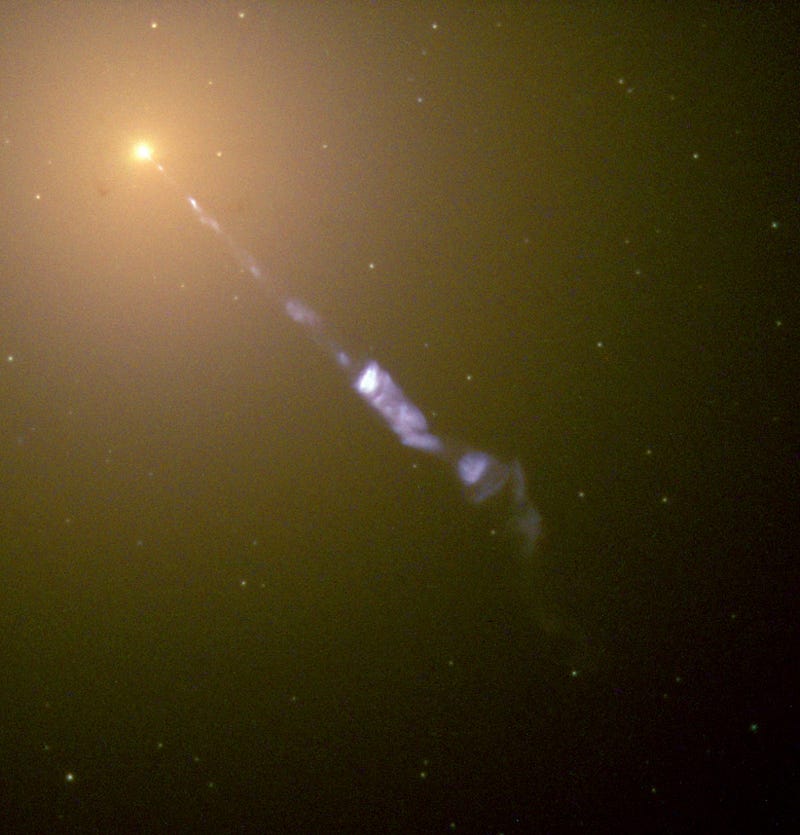
Containing millions or even billions of times the mass of our Sun, these black holes exist at the centers of galaxies, including one at the center of our own Milky Way. So far, we’ve only seen it indirectly, but that isn’t good enoughfor our question-asker Franklin Johnston, who asks:
I understand that our galaxy has a massive black hole in its center, but how close would you have to be to actually see it? I’m guessing you wouldn’t have to be close to the event horizon, but given all the stars surrounding it, and the dust and debris being sucked into it, it seems unlikely that you could see it from any appreciable distance, even if you were directly above or below the plane of the galaxy.
Let’s first tell you how we know there is a black hole at our galaxy’s center.
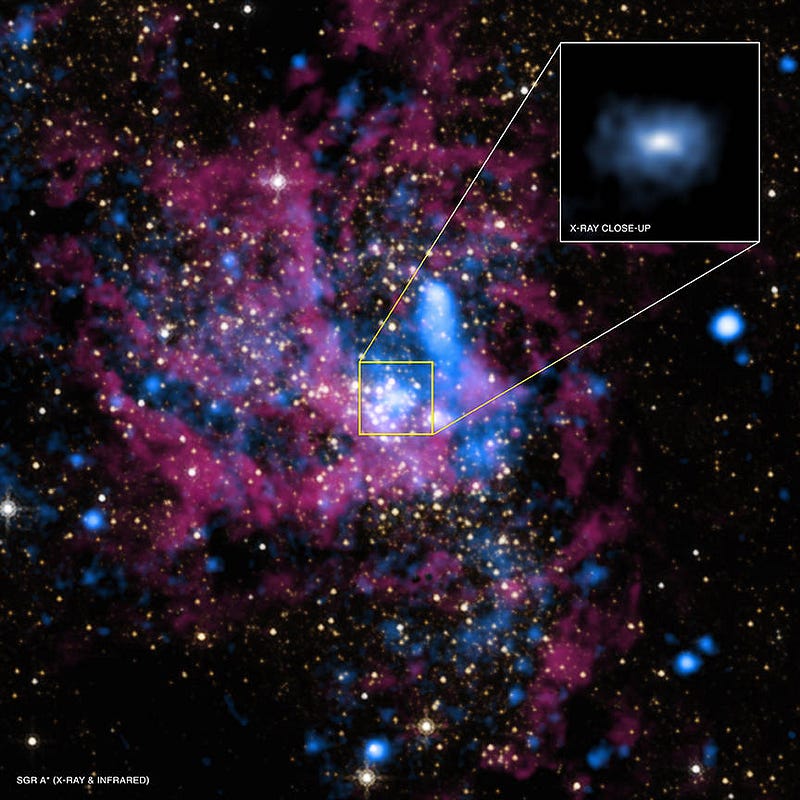
In visible light, a large amount of dust — found in the plane of our galaxy — blocks our view of the galactic center. But in other wavelengths, like infrared light, X-rays and radio, we can see through this dust, and detect a number of remarkable things, including hot gas that moves at tremendous speeds, the occasional flare that’s consistent with a black hole messily devouring matter, and most compellingly, the orbits of individual stars seen to all orbit a single point that emits no light at all.
That “point” is consistent with a supermassive black hole of four million solar masses. And the more massive a black hole is, the bigger it is as well. Or at least, the physically larger in space its event horizon is, or the region surrounding it from which no light can escape. If our Earth were somehow turned into a black hole, it would be tiny: its event horizon would be about 0.7 inches (1.7 cm) in diameter. If we were to do the same thing for our Sun, though, it’d be much larger: about 4 miles (6 km) across.
The supermassive black hole at our galaxy’s center? 14.7 million miles (23.6 million kilometers) across, or about 40% the size of Mercury’s orbit around the Sun. It should be noted that there are much, much bigger ones in other galaxies; they’re just much farther away, millions of light years instead of thousands.
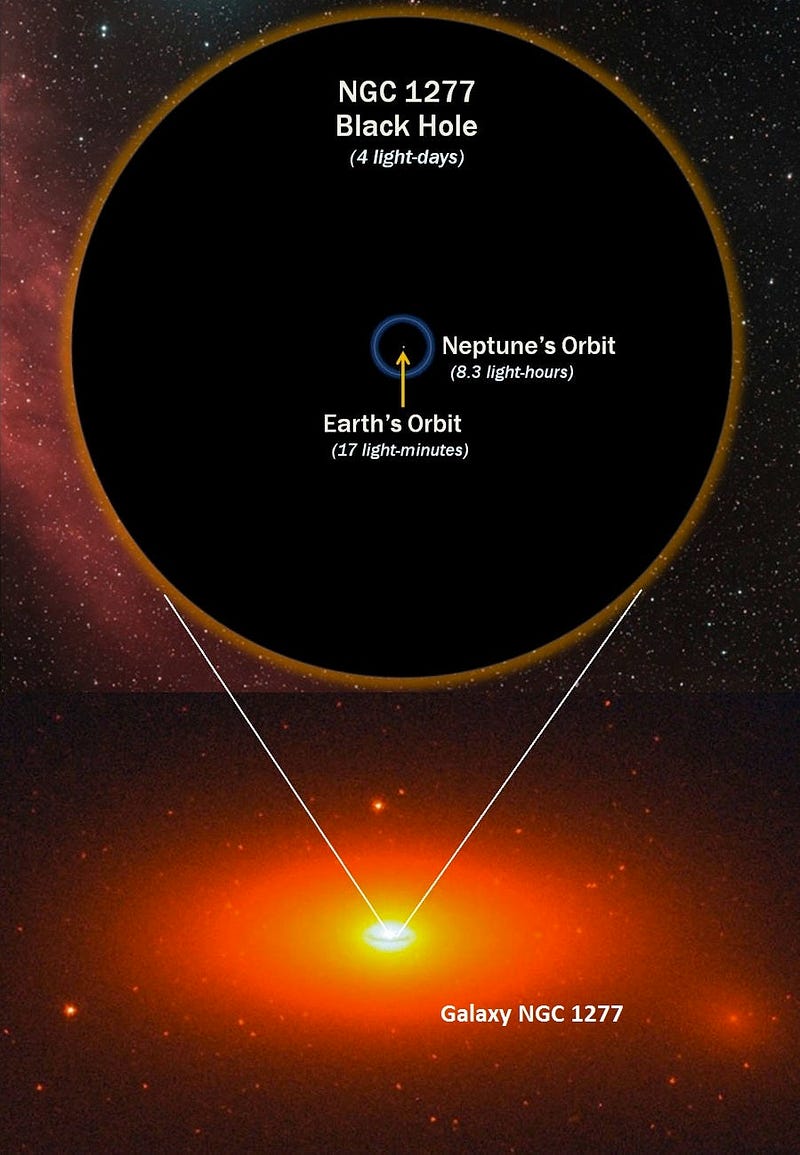
That’s huge for a single object, and the effects of General Relativity, which cause space to curve, magnify that even further! But while it’s easier to see huge things in space, it’s also very, very far away, which makes it incredibly difficult to resolve. At a distance of roughly 26,000 light years, the physical size of the black hole itself will be just 19 micro-arc-seconds, or 19 millionths of a sixtieth-of-a-sixtieth of a degree. For comparison, the best resolution of the Hubble Space Telescope is about 26 milli-arc-seconds, more than a factor of 1,000 too large to see this black hole.
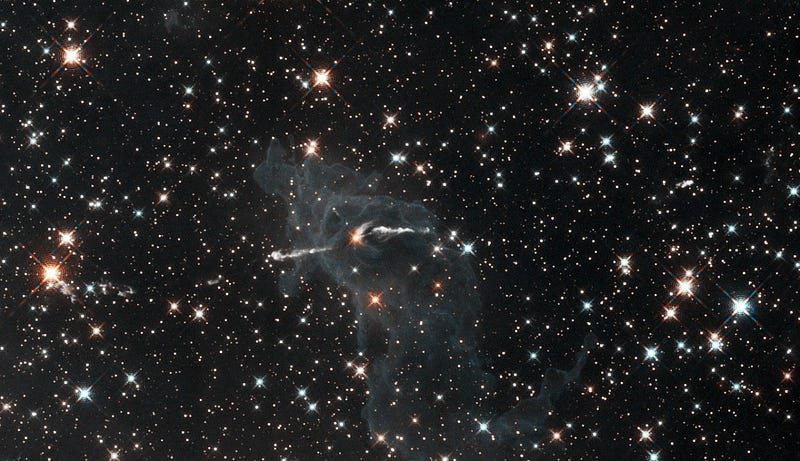
In theory, if we got much closer — so that we were only a few hundred light years away — we could image it directly. But that’s not really within the realm of practicality. However, there’s a tricky technique we can use to overcome this limit. You see, there are certain wavelengths of light, particularly the radio and the X-ray, where either the black hole can become very bright momentarily, or the objects passing near the black hole could illuminate the event horizon by back-lighting it.
When it comes to resolution, it’s normally the size of a telescope’s mirror that determines how sharply we can see an object: how many wavelengths of that light can fit across your telescope’s mirror. That’s why the Chandra X-Ray telescope has such great resolution, despite being a relatively small telescope: X-ray light has such small wavelengths, and so many of them can fit across a mirror. That’s also why radio telescopes — like the one at Arecibo — are so huge: radio waves can be many meters in diameter, and so require enormous telescopes to obtain very good resolutions.
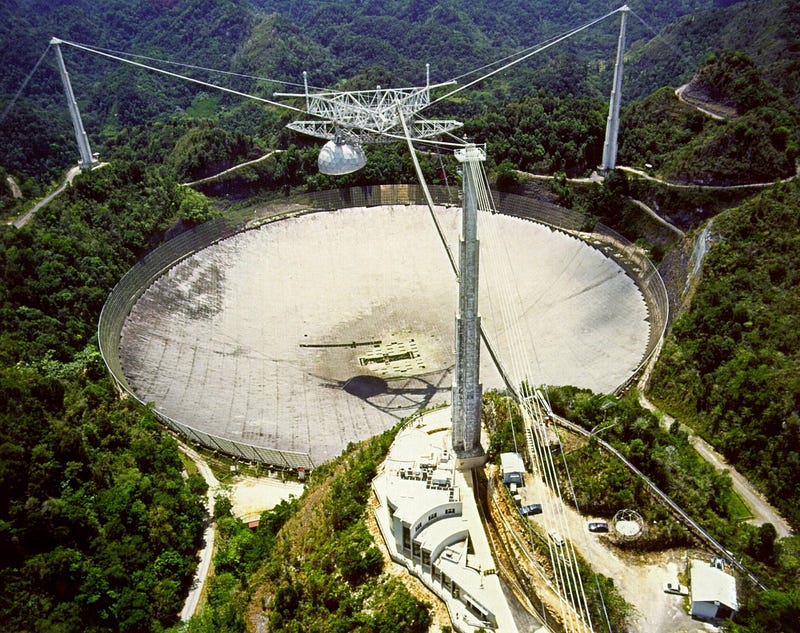
But there’s a workaround to obtain better resolutions, meaning we don’t need to build a telescope that’s the size of Earth (or larger) to image the black hole directly: we can use an array of telescopes separated by very long baselines. They’ll only have the light-gathering power of the individual telescopes, meaning that the object will appear very faint, but they can obtain the resolution of a telescope that’s approximately the distance between the farthest two telescopes in the array!
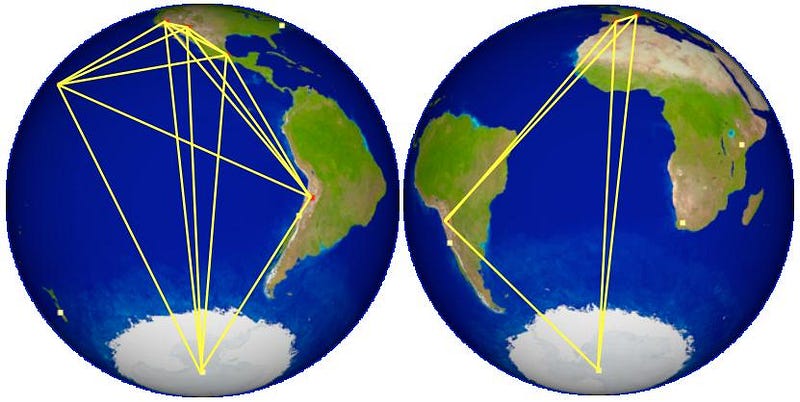
That’s exactly the idea behind the Event Horizon Telescope, which plans to use very long baseline interferometry at short (~1 mm) radio wavelengths to make exactly this type of measurement! There are two proposals — a seven-station and a thirteen-station array — each of which could answer the question of “do black holes have a true event horizon” by directly imaging them!
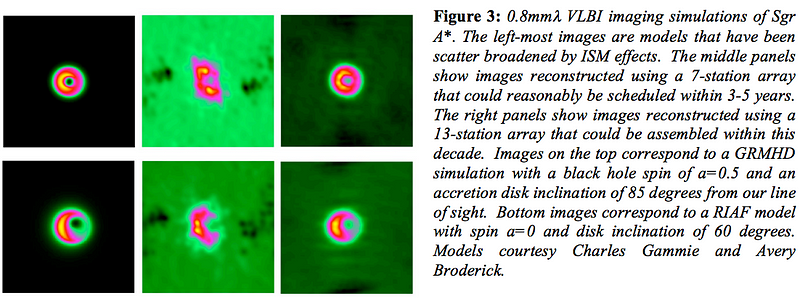
Sagittarius A*, the black hole at the galactic center, is the ideal target, as it’s anticipated to have the largest event horizon as viewable from Earth. What’s kind of funny: the second largest one should be the one at the center of M87 (atop), the largest galaxy in the Virgo cluster, which ought to be just a factor of five larger than the proposed resolution of the Event Horizon Telescope, meaning we can observe its jet in unprecedented detail, gaining a window into exactly how these hypersonic ejection features form and behave!
But if your question was all about using your eyes — if you yourself wanted to see it — I’ve got terrible news for you.
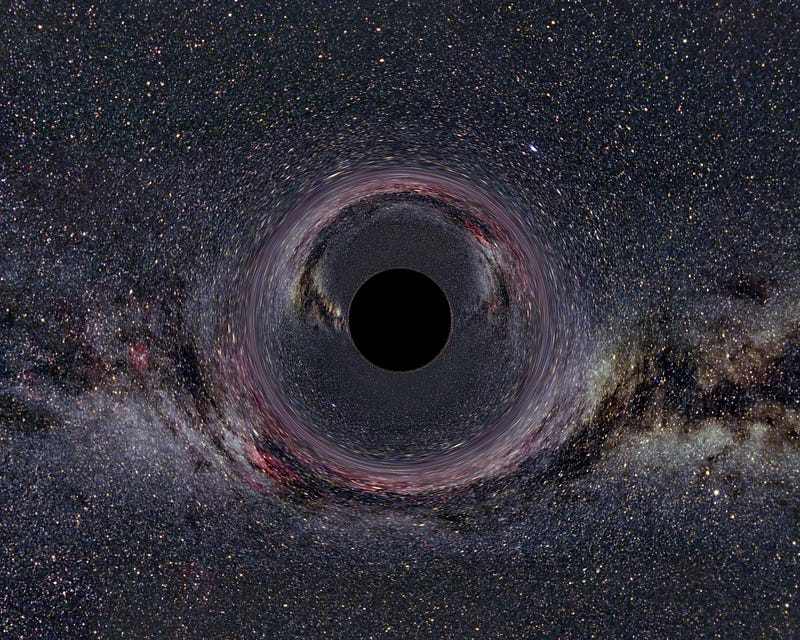
The resolution of the human eye is a paltry, pathetic 60 arc-seconds, meaning that if you wanted to resolve something that was 19 micro-arc-seconds across, you’d need to be roughly three million times closer to it, or at a distance of about 546 Astronomical Units. The Sun is the closest star to us, but the second closest is Proxima Centauri, at some 4.24 light years away, or 268,000 Astronomical Units! That’s right, it would have to be about 500 times closer to us than the next-nearest star, just for you (with your pathetic human eyes) to resolve it at all.
My advice? Stick with the telescopes. Not only is it a lot quicker, not only is it a lot cheaper (and less dangerous) than the huge, interstellar journey, but it’s more rewarding, too, as we’ll be able to see more with this array of telescopes than your eyes ever could.
Submit your questions and suggestions for the next Ask Ethan here.
Leave your comments on our forum, support Starts With A Bang here on Patreon, and pre-order our first book, Beyond The Galaxy, coming in six weeks!





